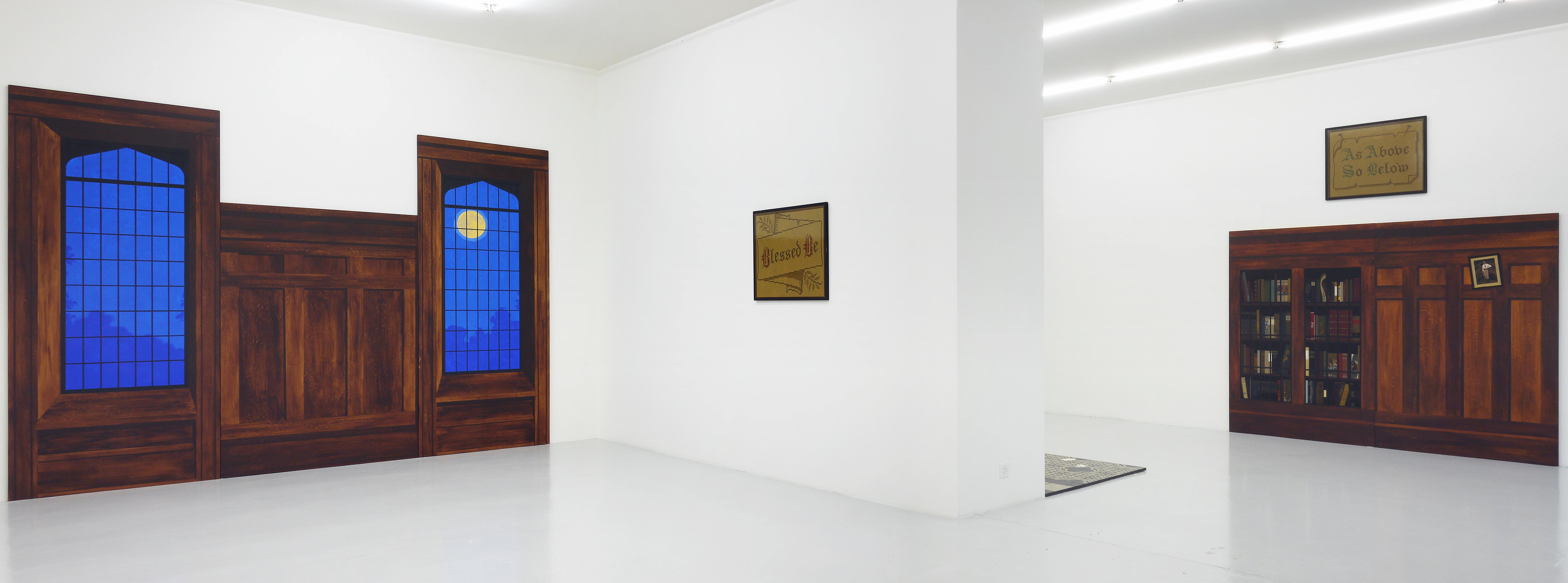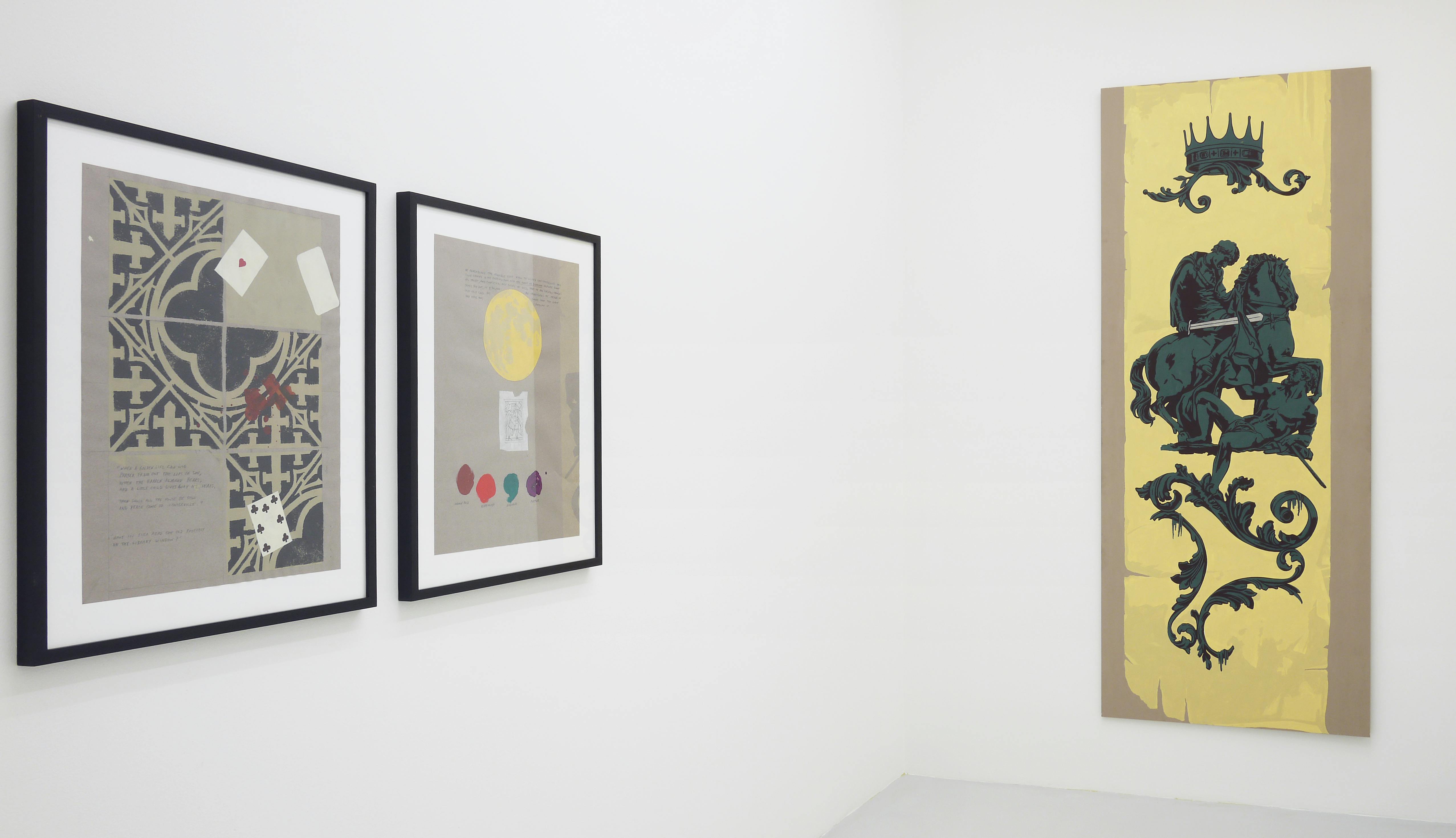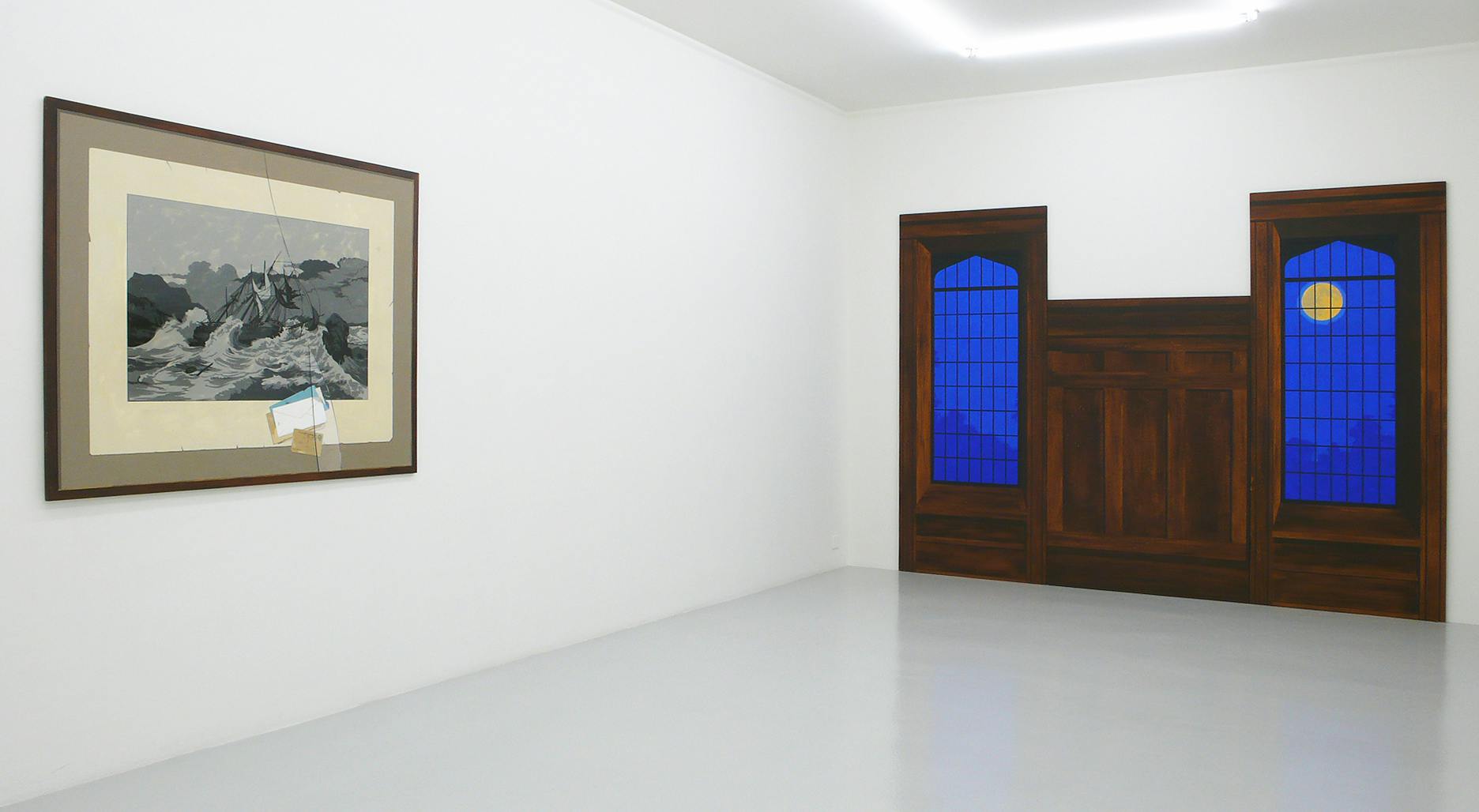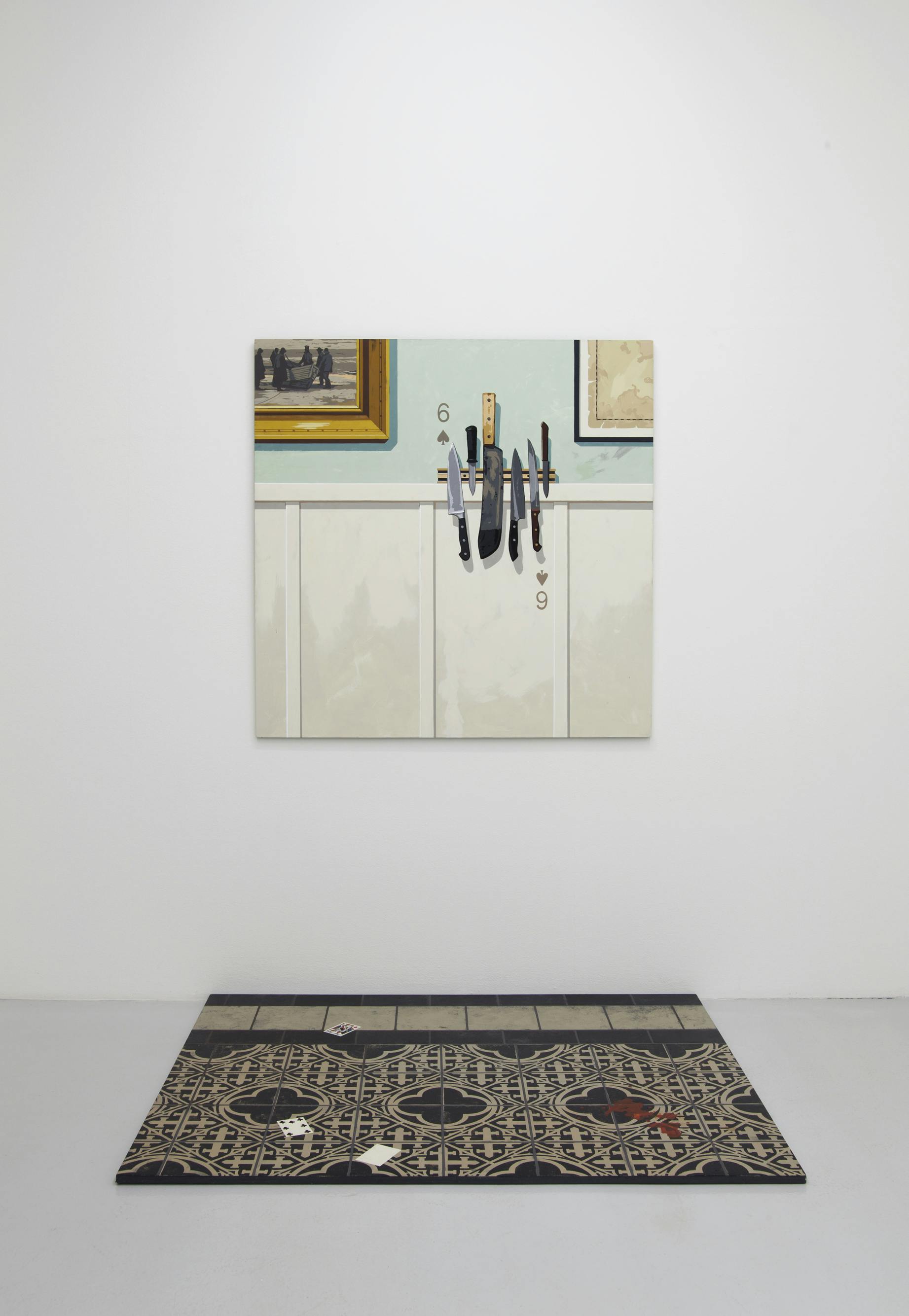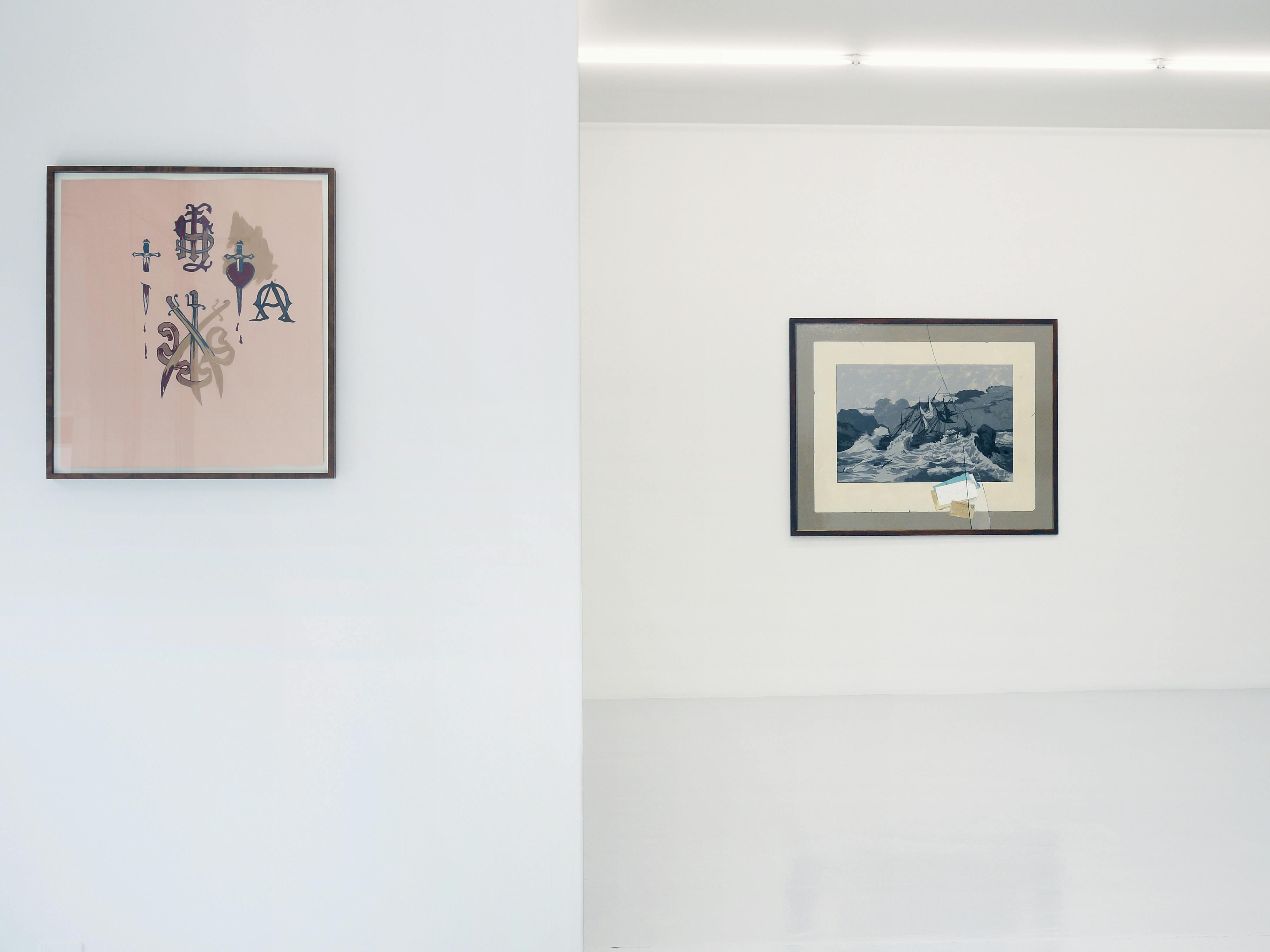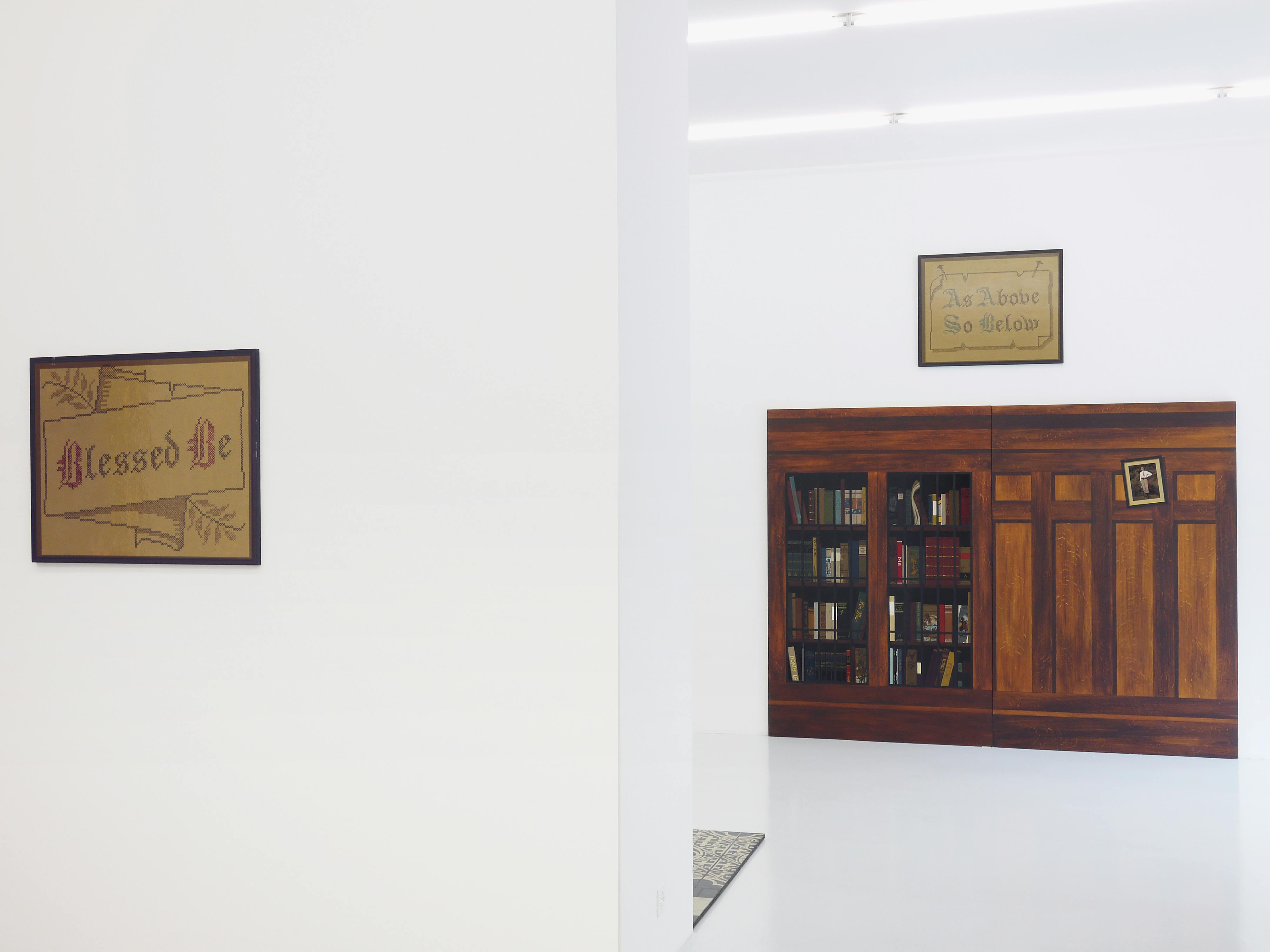It is our pleasure to announce the third solo presentation of works by New York-based artist Matthew Benedict (*1968 in Connecticut, USA). In 2008 he mounted his first, much acclaimed solo museum presentation in the Von der Heydt Museum Wuppertal, Germany, accompanied by a comprehensive, monographic catalogue. He has since participated internationally in group exhibitions, including the 1st Prague Triennial. Mai 36 Galerie is showing a group of works titled The Canterville Ghost that explore magical phenomena and illusions.
Matthew Benedict’s interpretation of magic is not restricted to its transcendental meaning; he also addresses passively experienced influences and events that can not be explained by logic alone. In a range of different media – paintings, embroidery, photographs and sculptures – he demonstrates the omnipresence of magic and its more recent role as a manifold object of consumption. He casts a spell, as it were, on everyday products, thereby lending them extraordinary effects that can only be explained by “magical” causes. In a rising flood of irrationalism, magic has become a world that runs counter to the normality of everyday life, a world not only to be consumed but also practiced in countless variations.
In addition to his study of magic, Benedict has been working on a new pictorial idiom that draws on venerable visual traditions. The Shipwreck and The Letters Home is painted to look like a large framed print behind broken glass, with a small scattering of letters and postcards between glass and image. The painting depicts the “Princess Augusta” that ran aground in 1783 off Block Island, Rhode Island, where it capsized, gradually acquiring a new life as a ghost ship that was believed to appear periodically as a fiery glow on the horizon. The trompe l’oeil effect underscores the magical impact of this legendary tale. The same applies to the quodlibet Three Wands (The Lord of Established Strength), an illusionist painting of three framed magic wands on red velvet, which belongs to the artist: on top the leg of a piano stool, in the middle a brotherhood torch of the 19th century, and on the bottom a magician’s wand. The playing card underneath, a three of clubs, is known in tarot as the “Lord of Established Strength,” a title indicating its divinatory significance.
The trompe l’œil, considered the acme of illusionist art, goes back to antiquity, reaching an interim culmination in Flemish art of the 17th century. Two gazes are brought to bear in looking at a trompe l’œil painting: that of the person who is deceived (the viewer) and that of the person in the know (the artist). When looking at a trompe l’œil painting, we inevitably take up both positions: the naïve and gullible viewer, willing to be deceived, and the reflective one who knows the rules. Tension is generated when the two vantage points become enmeshed. What starts out as cognitive exploration ends up as playful delight in appearances. Matthew Benedict’s paintings are a contemporary variation on this device.
[Text: Oliver Zybok]






